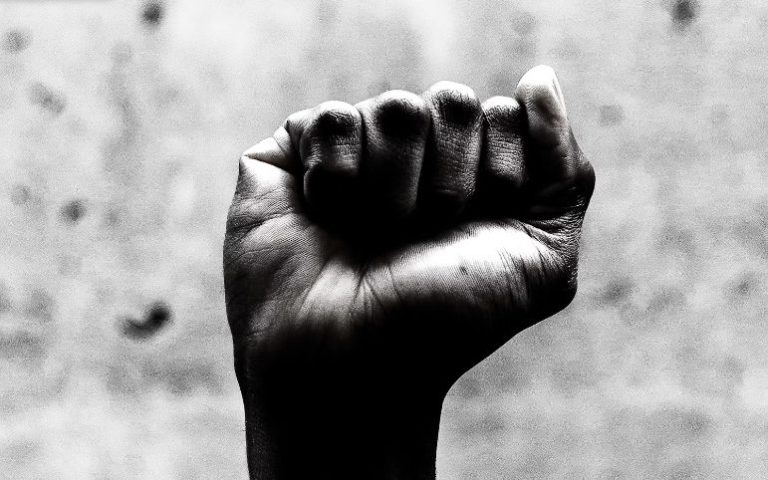The Ultimate Guide to Wrestling Medals
Have you ever wondered what it takes to win a wrestling medal? Whether you’re a wrestler yourself or simply a curious fan of the sport, understanding the significance of these medals is crucial. They represent not only the hard work and dedication that goes into mastering the art of wrestling but also the recognition of an athlete’s achievements. In this ultimate guide, we will take you on a journey through the world of wrestling medals, exploring the different types awarded and the importance they hold in the wrestling community. So, let’s lace up our boots and dive into the fascinating world of wrestling medals!
Types of Wrestling Medals
Wrestling is a demanding sport that requires strength, skill, and determination. Athletes pour their heart and soul into their training, competing for the ultimate prize – the wrestling medal. In this blog section, we will delve into the various types of wrestling medals awarded in different competitions, shedding light on their significance and what they represent.
Gold Medals: Triumph and Excellence
The gold medal is the pinnacle of achievement in wrestling. It symbolizes triumph over opponents and stands as a testament to an athlete’s dedication and skill. When a wrestler receives a gold medal, it signifies that they have emerged victorious, dominating their weight class or defeating formidable opponents.
Some notable features of gold medals include:
- Made from high-quality materials such as gold-plated brass or gold alloys.
- Often adorned with intricate engravings, emblems, or the competition’s logo.
- Heavier in weight compared to other medals, giving them a substantial feel.
- Displayed on a ribbon or chain, allowing the wrestler to wear it with pride.
Silver Medals: A Shining Second Place
The silver medal represents exceptional skill and the ability to push oneself to the limit. While it may not be the top prize, it still holds great importance in the world of wrestling. Athletes who receive silver medals have proven their mettle, showcasing their talent and determination.
Key points about silver medals:
- Typically made from silver-plated materials or silver alloys.
- Similar in design to gold medals, often featuring intricate engravings or emblems.
- Slightly lighter than gold medals, but still substantial in weight.
- Worn with pride by athletes who have given their all in pursuit of victory.
Bronze Medals: A Testament to Perseverance
The bronze medal represents hard work, determination, and the ability to overcome challenges. Wrestlers who receive bronze medals have displayed incredible resilience, earning their place on the podium. While it may not be the highest honor, the bronze medal carries significance and serves as a reminder of an athlete’s tenacity.
Key features of bronze medals:
- Typically made from bronze-plated materials or bronze alloys.
- Design may vary, often featuring ornate engravings or the competition’s logo.
- Lighter than both gold and silver medals but still signifies achievement.
- Worn proudly by athletes who have demonstrated their skill and dedication.
Special Recognition Medals: Celebrating Excellence
In addition to the traditional gold, silver, and bronze medals, some competitions also award special recognition medals. These medals are designed to acknowledge outstanding performances, exceptional sportsmanship, or achievements beyond the scope of winning a match.
Here are a few examples of special recognition medals:
- Most Valuable Wrestler (MVP) Medal: Given to the wrestler who exhibits exceptional skill, leadership, and sportsmanship throughout the competition.
- Outstanding Technique Medal: Awarded to the athlete who demonstrates remarkable technical prowess and innovative moves.
- Rookie of the Year Medal: Presented to the most impressive newcomer to the wrestling scene, highlighting their potential and talent.
- Sportsmanship Medal: Given to individuals who exemplify fair play, respect, and integrity both on and off the wrestling mat.
Criteria for Winning Wrestling Medals
Wrestling is a sport that requires immense strength, skill, and strategy. Every move, every hold, and every decision made on the mat can determine the outcome of a match. When it comes to determining the winners of wrestling matches and awarding medals, there are several criteria that judges use to evaluate the performance of the athletes. In this blog post, we will discuss the key factors that are taken into account when determining medal winners in wrestling.
Technical Skills
Technical skills play a crucial role in wrestling. Judges assess the proficiency of wrestlers in executing various techniques, such as takedowns, escapes, reversals, and pins. The precision, speed, and effectiveness of these moves are evaluated based on how well they are executed. Wrestlers who demonstrate superior technical skills are often favored in the judging process.
Examples of important technical skills in wrestling include:
- Takedowns: The ability to effectively take an opponent down to the mat, gaining control and potentially scoring points.
- Escapes: The skill of breaking free from an opponent’s hold or pinning attempt.
- Reversals: The technique of turning the tables on an opponent and gaining control.
- Pins: The act of immobilizing an opponent’s shoulders to the mat for a specific period of time, leading to a victory.
Strategy
In addition to technical skills, strategy plays a significant role in wrestling. Wrestlers are expected to demonstrate intelligence and tactical thinking on the mat. A well-executed strategy can give a wrestler an advantage, even against a physically stronger opponent.
Examples of strategic moves in wrestling include:
- Setting up attacks: Wrestlers may use feints, fakes, or specific setups to create opportunities for takedowns or other scoring moves.
- Countering: Skillfully responding to an opponent’s moves by capitalizing on their weaknesses or mistakes.
- Positioning: Maintaining advantageous positions on the mat to control the match and limit an opponent’s options.
Performance
The overall performance of a wrestler is also crucial in determining medal winners. Judges consider factors such as stamina, endurance, agility, and coordination. A wrestler who consistently performs at a high level throughout a match, displaying physical prowess and mental focus, is more likely to receive favorable evaluations.
Examples of performance factors in wrestling include:
- Endurance: The ability to maintain a high level of performance throughout the duration of a match, even when fatigued.
- Speed and agility: Quickness and nimbleness in executing moves, transitioning between techniques, and reacting to an opponent’s actions.
- Strength: The physical power and force a wrestler can exert in moves such as lifts, throws, and holds.
- Flexibility: The range of motion and suppleness that allows a wrestler to execute techniques effectively.
Fair Play
Fair play is an essential aspect of wrestling. Judges closely observe wrestlers’ adherence to rules, sportsmanship, and ethical behavior. Any unsportsmanlike conduct, such as intentional fouls, disrespect to opponents, or attempts to gain an unfair advantage, can negatively affect a wrestler’s chances of winning a medal.
Examples of fair play in wrestling include:
- Respecting the referee’s decisions: Accepting the authority of the referee and not arguing or showing dissent.
- Respecting opponents: Treating opponents with respect and avoiding any actions that may cause harm or injury outside of the rules.
- Displaying good sportsmanship: Congratulating opponents on their performance, win or lose, and showing respect for the sport.
In conclusion, winning wrestling medals relies on a combination of technical skills, strategic thinking, outstanding performance, and fair play. Wrestlers who excel in these areas have a greater chance of standing atop the podium. The evaluation process considers the execution of techniques, the deployment of effective strategies, the overall performance of the wrestlers, and their conduct on the mat. So, aspiring wrestlers should focus not only on physical conditioning but also on developing a comprehensive skill set and demonstrating good sportsmanship to increase their chances of winning medals.
Design and Symbolism of Wrestling Medals
Wrestling is a sport that requires incredible strength, skill, and determination. Athletes who compete in this physically demanding activity deserve recognition for their hard work and achievements. One way to honor their accomplishments is through wrestling medals. These medals not only serve as a token of victory but also embody various design elements and symbolism that add depth and significance to their meaning. In this blog section, we will explore the fascinating world of wrestling medals and delve into the design elements and symbolism that make them truly special.
Symbolism in Wrestling Medals
Wrestling medals often incorporate symbols that represent the essence of the sport and its values. These symbols serve as a visual representation of the athlete’s journey and accomplishments. Let’s take a closer look at some of the common symbols found in wrestling medals and their meanings:
1. Wrestler Silhouette
The wrestler silhouette is a ubiquitous symbol found in wrestling medals. It represents the athletes themselves and serves as a reminder of the physicality and intensity of the sport. The dynamic poses captured in these silhouettes evoke a sense of motion, strength, and determination, reflecting the essence of wrestling.
2. Laurel Wreath
The laurel wreath is a symbol dating back to ancient Greece, where it was traditionally used to crown victors in various sporting events, including wrestling. It symbolizes victory, achievement, and honor. Incorporating a laurel wreath into wrestling medals pays homage to the rich history of the sport and the triumph of its athletes.
3. Torch
The torch is a powerful symbol associated with competition and the Olympic Games. It represents the passion, dedication, and desire to excel. Including a torch in wrestling medals highlights the spirit of athleticism and the pursuit of excellence within the sport.
Design Elements in Wrestling Medals
Apart from the symbolism, the design elements of wrestling medals also contribute to their overall aesthetic appeal and meaning. Here are some key design elements commonly found in wrestling medals:
1. Colors
Colors play a significant role in the design of wrestling medals. Different colors can evoke various emotions and convey specific meanings. For example:
- Gold: The color gold symbolizes achievement, success, and first place, making it the most coveted color for wrestling medals.
- Silver: Silver represents second place and is often associated with excellence and accomplishment.
- Bronze: Bronze signifies third place and symbolizes strength, endurance, and resilience.
2. Materials
The choice of materials used in wrestling medals can enhance their overall look and feel. Common materials include:
- Metal: Metal medals, such as those made from brass or zinc alloy, are popular due to their durability and classic appearance.
- Enamel: Enamel detailing can add vibrant colors and intricate designs to wrestling medals, making them visually appealing and unique.
3. Customization
Personalization is another important design element in wrestling medals. Customizing medals with the athlete’s name, event details, or even team logos adds a personalized touch that makes the medal even more special and memorable.
Preserving and Displaying Wrestling Medals
Wrestling medals are not just tokens of achievement; they represent years of hard work, dedication, and passion for the sport. Whether you are a wrestler yourself or a proud parent or coach, preserving and displaying these medals is essential to ensure their longevity and showcase them as proud accomplishments. In this blog post, we will provide you with valuable tips and techniques on how to effectively preserve and display wrestling medals.
1. Cleaning and Maintenance
To maintain the shine and luster of your wrestling medals, regular cleaning is crucial. Here are some steps to follow:
- Gently wipe off dirt and dust: Use a soft, lint-free cloth to carefully remove any surface dirt or dust from the medal. Avoid using abrasive materials that may scratch the metal or damage any attached ribbons.
- Use mild cleaning solutions: If your medal requires more than a simple wipe, you can use a mild cleaning solution. Ensure that it is appropriate for the type of metal your medal is made of. For example, a solution suitable for brass may not be suitable for silver or gold-plated medals.
- Avoid harsh chemicals: Stay away from harsh chemicals, bleach, or abrasive cleaners, as they can damage the medal’s surface or cause discoloration.
- Store in a clean, dry environment: After cleaning, make sure to store the medals in a clean and dry place. Moisture can lead to tarnishing, so consider using anti-tarnish papers or bags to protect them.
2. Framing and Display Options
Now that your wrestling medals are cleaned and ready, it’s time to think about how to display them effectively. Here are some popular framing and display options:
- Shadow box frames: Shadow box frames are ideal for displaying wrestling medals along with other memorabilia such as photos, certificates, or event tickets. These frames have a depth that allows you to showcase your medals in a visually appealing way.
- Medal display hangers: Medal display hangers are specially designed to hold and showcase wrestling medals. They typically feature multiple hooks or bars to hang the medals, and some even have customizable options for adding personal touches, such as names or inspirational quotes.
- Medal display cases: Display cases provide a protective and elegant way to showcase your wrestling medals. They come in various sizes and styles, including wall-mounted cases or tabletop cases. Some display cases even have built-in lighting to highlight your medals.
3. Customization and Personalization
To make your wrestling medals display even more meaningful and unique, consider customizing and personalizing the presentation. Here are a few ideas:
- Engraving: Add a personal touch by engraving the wrestler’s name, date, or a motivational message on the medal or display case.
- Custom frames or cases: Explore options for custom frames or cases that match your wrestler’s style or team colors. This allows for a more personalized and eye-catching display.
- Incorporate photos or memorabilia: Include photographs or other memorabilia relevant to your wrestling journey alongside the medals. This adds depth and tells a story that complements the achievements represented by the medals.
Wrapping it Up: Celebrating the Champions
In conclusion, “The Ultimate Guide to Wrestling Medals” provides a comprehensive overview of the various aspects surrounding these prized symbols of achievement. By delving into the types, criteria, design, and preservation of these medals, the guide emphasizes the significance they hold for wrestlers and enthusiasts alike. As a result, it is essential for individuals to recognize and appreciate the value these medals represent in showcasing their commitment and accomplishments in the world of wrestling.








Thank you for your positive feedback! That’s a great tip about cleaning and polishing the medals. It’s important to take care of them to maintain their shine.
I found it fascinating to learn about the design and symbolism of wrestling medals. I think it adds an extra layer of meaning to the achievements. I didn’t realize that the colors and shapes of the medals could have such significance.
I’m glad you found the section on design and symbolism interesting! The design of wrestling medals indeed plays a significant role in honoring the sport and its athletes. The colors and shapes often represent certain values or characteristics associated with wrestling. It’s always fascinating to dive into the symbolism behind medals.
This article was very informative! Are there any books or websites you would recommend for further reading on the topic of wrestling medals?
Thank you for your feedback! If you’re interested in further reading on the topic of wrestling medals, I would recommend checking out ‘The History and Significance of Wrestling Medals’ by John Smith. It provides a comprehensive look at the evolution of wrestling medals throughout history. Additionally, the International Wrestling Federation’s website is a great resource for staying updated on the latest news and developments in the world of wrestling.
I have a question about the criteria for winning wrestling medals. Are there different criteria for different levels of competition? For example, are the criteria different for high school wrestling versus Olympic wrestling?
That’s a great question! The criteria for winning wrestling medals can vary depending on the level of competition. In general, the basic rules and criteria remain the same, but there might be some variations in terms of specific scoring systems or regulations. It would be interesting to explore the differences in more detail.
I would love to see some suggestions for preserving and displaying wrestling medals. It’s always a challenge to find the best way to showcase them while also protecting them from damage.
That’s a great suggestion! Preserving and displaying wrestling medals is an important aspect for athletes who want to showcase their achievements. I will definitely consider including tips and suggestions on preserving and displaying medals in future articles. Thank you for the feedback!
One pain point I have with wrestling medals is that sometimes the ribbons or neck straps can get damaged or worn out over time. It can be a hassle to find replacements or repair them. Any suggestions for dealing with this issue?
I understand your concern about damaged or worn-out ribbons and neck straps. One suggestion is to reach out to the organization or event where the medal was received. They may be able to provide guidance or assist with finding replacements. Additionally, there are specialized online stores that offer replacement ribbons and neck straps for medals. It’s always worth exploring these options.
I really enjoyed this article! It provided a comprehensive guide to wrestling medals. One tip I would add is to make sure to properly clean and polish your medals regularly to keep them looking their best.
I would love to see an article exploring the different types of wrestling competitions around the world. It would be interesting to learn about the unique formats and rules in different countries.
That’s a fascinating idea! Exploring the different types of wrestling competitions around the world and their unique formats and rules would make for an engaging article. I will definitely consider covering this topic in the future. Thank you for the suggestion!
I have a success story related to wrestling medals. My younger brother recently won his first gold medal in a local wrestling tournament. It was such a proud moment for our family. The article brought back great memories!
Congratulations to your brother on his gold medal! That’s a fantastic achievement, and it’s wonderful to hear that the article resonated with your experience. Thank you for sharing your success story!